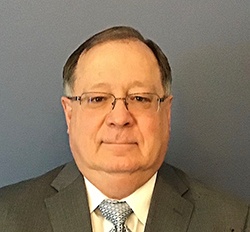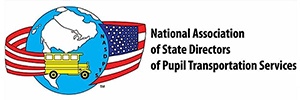Michael LaRocco reflects on his tenure
I recently finished my two-year tenure as president of the National Association of State Directors of Pupil Transportation Services (NASDPTS), an organization comprised of state and national leaders which provides leadership, assistance and motivation to the nation’s school transportation community with the goal of providing safe, secure, efficient, economical, and high-quality transportation to school children.

In my “other life,” I am the director of Indiana’s Office of School Transportation. Our office’s primary role is to ensure that all new and existing drivers are Indiana certified through basic training, certification, and annual recertification courses. We are responsible for all training and materials, answering questions, putting out fires, clarifying laws and providing recommendations.
I came into school transportation through dumb luck. When I left the military, my wife took a position teaching for a school district. They were looking for an assistant director with computer experience and I had worked with computers the last four years of my military career. I applied, they accepted me and after a few months as the assistant director I was promoted to director. I was director in two school districts for over 15 years before moving to the Department of Education and have been involved in the industry for over 27 years.
Before I took over as the state director in July of 2010, I was aware of both NAPT and NASDPTS. As a volunteer organization, NASDPTS is always looking for people to step into leadership positions. After attending the NAPT conference in 2010, and then later after attending a few NASDPTS conferences I was asked if I would be willing to run for treasurer of NASDPTS. I agreed and held that position for almost two years, before transitioning into the role of president-elect, and then two and a half years later becoming president of NASDPTS.
During that time, one of NASDTPS’s biggest accomplishments was resetting ourselves – as far as our documents for organization. We have gone from a conglomeration of various bylaws, constitution, a manual of operating procedures, and various other annals. We established a new set of bylaws through the contributions of our board members who developed great governance documents. We also improved financial controls and governance, providing a clearer overall framework for how we proceed in the future.
 We have learned from COVID-19 how important it is to have better communication and integration of projects and discussions with our sister organizations (NAPT and the National School Transportation Association [NSTA]) to ensure that we have a more unified message. That coordination was critical for us to give a unified message to our transporters and school districts. ‘
We have learned from COVID-19 how important it is to have better communication and integration of projects and discussions with our sister organizations (NAPT and the National School Transportation Association [NSTA]) to ensure that we have a more unified message. That coordination was critical for us to give a unified message to our transporters and school districts. ‘
For a lot of pupil transportation providers, it was, and still is, a very confusing time. Making sure we have those lines of communications open and continue to have that cooperation is vital for our industry. Because of COVID-19, there is a bit more flexibility; we have moved from quarterly board meetings to monthly board meetings that are done online. That cooperation and flexibility was a big lesson for our organization.
Moving forward, the biggest priority is to keep things as even-keeled as possible until we return to “normal,” understanding that the industry will not be the same as before. How do we incorporate everything we have learned? We need to look at how we are going to get our members involved, aware, and informed regarding this quick leap into new technological advancements. Electric buses, electronic control systems, lane departure and predictive stop arms are all on the table, with autonomous school buses on the horizon.
There also needs to be a focus on how transportation is going to be done differently in the future. We found out through COVID-19 that school transportation is the only way for many children to get a meal. For others, a school bus means access to educational materials or medical services. We have learned that school transportation is not just transporting children to and from home: it is community involvement, and we need to expand how we do our jobs and what other value-added services we can provide to our communities.
If we are all focused on the idea of safe transportation for our kids – our most precious cargo – we will be successful. Working together means realizing that we are going to have some diverging viewpoints in certain areas. Each organization is providing a slightly different viewpoint, from a state or local director’s perspective, to the private operator’s perspective.
We are all working to push though, and all looking to answer the same question: How can we provide the safest transportation possible?
Michael LaRocco (mlarocco@doe.in.gov) is the director of the Indiana Office of School Transportation. He recently concluded his tenure as president of NASDPTS.


